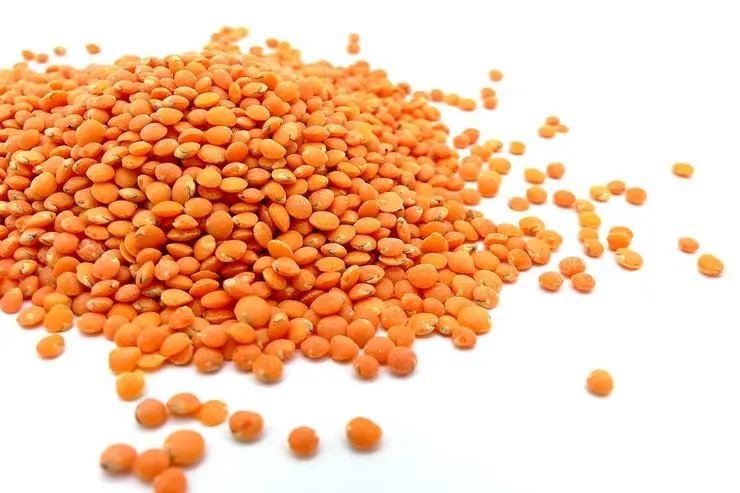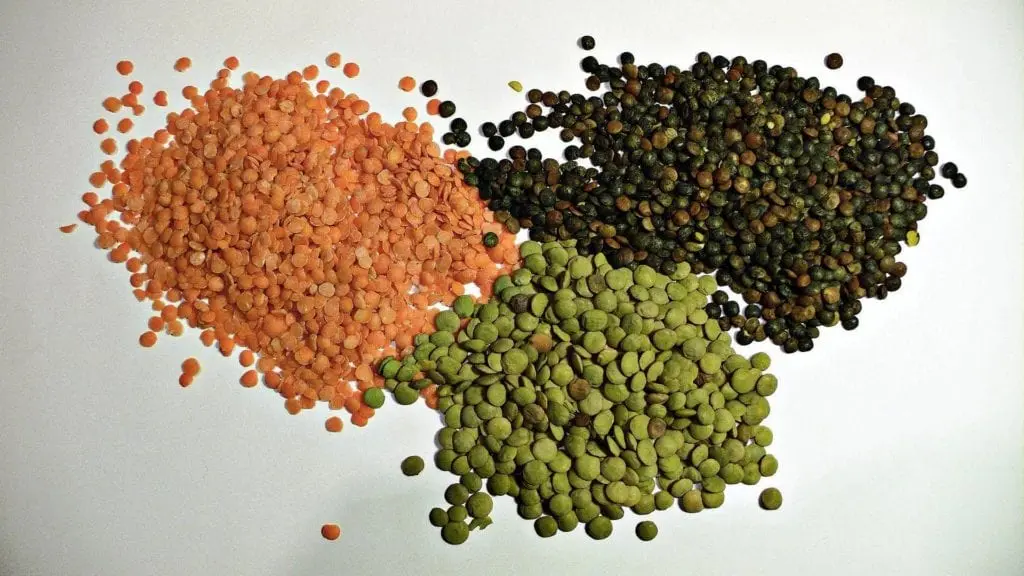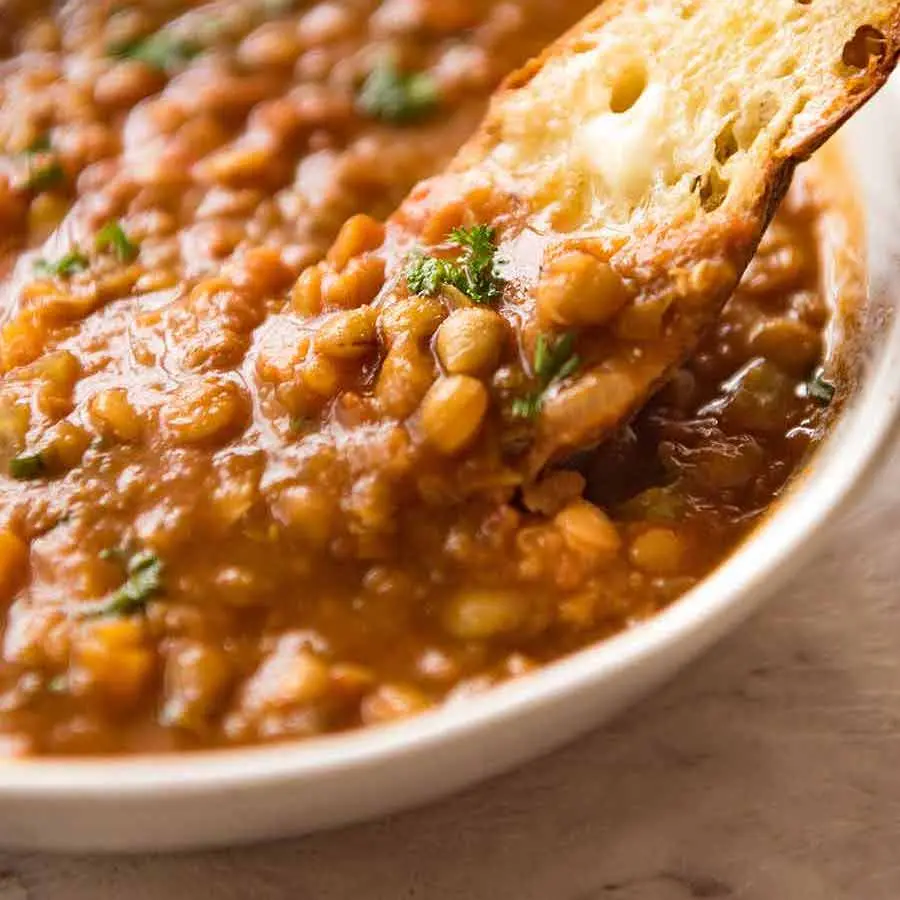Contents
Description
Lentils are not just a plant of the legume family, but a whole legend. The biblical story says that one brother – Esau – for a plate of delicious lentil stew sold to another brother – Jacob – his birthright. In Israel, people consider it sacred and passed on with a huge share of the inheritance.
Are lentils really that tasty? Yes, and it’s also beneficial! It is not for nothing that the French, fine connoisseurs of tasty and healthy food, always include it in their diet.
This legume is a pretty herbaceous annual plant with a height of 15 to 70 cm. Its edible beans are black, brown, green, and red (depending on the variety). Lentils have a unique feature: they are not capable of accumulating nitrates and radionuclides; therefore, even grown in contaminated areas, they always remain an environmentally friendly product.

The queen of legumes is very unpretentious and can withstand short-term (up to -5 ° C) frosts. It also withstands prolonged drought due to the highly branched taproot, which is quite powerful for such a small plant.
The slender, highly branched stem of the plant is strewn with paired leaves. It looks like a fluffy bush, erect or semi-creeping, capable of producing tasty and healthy beans that we happily eat at full development. By the bean’s size, these legumes differ. There are large-seeded (plate) and small-seeded (the latter is the most unpretentious and drought-resistant).
The lentil bush looks very aesthetically pleasing during the flowering period – all in a halo of small five-petal flowers of various shades (depending on the variety), which modestly peep out of the axils of green leaves. Many types of lentils are self-pollinated; only rare varieties have cross-pollination.

Composition and calorie content
Lentils contain a large number of microelements: calcium, magnesium, potassium, phosphorus, iron, as well as fatty acids Omega-3, Omega-6, which affect the health of skin and hair, and immunity. Lentils contain a large amount of protein, which is easy to absorb for the body.
- Calorie content 352 kcal
- Proteins 24.63 g
- Fat 1.06 g
- Carbohydrates 52.65 g
Benefits of lentils

Lentil grains are medicinal; they are very popular in folk medicine. Infusions and decoctions of lentils help with poisoning and lung diseases. Puree from it is good for colitis and stomach ailments. The broth can remove toxins from the body and has anti-tumor activity.
And if you want to lose weight, be sure to include legumes in your diet! The result will not keep you waiting long since it is low in calories, rich in fiber, and even small portions can cause quick satiety.
You can cook almost everything from lentils, from delicious soups and healthy bread to pilaf and cutlets. And especially refined culinary specialists manage to make even sweets from it))
Lentils go well with fish, eggs, meat, herbs and can be an excellent side dish. Lentil porridge is delicious and rich in vitamins, affecting the metabolism and strengthening the heart and blood vessels. Moreover, lentils retain their properties even after heat treatment.
Lentils are rich in amino acids, iron, B vitamins. It is one of the few foods to which our body is genetically perfectly adapted.
Here are just a few great recipes:
- Carrot cream soup with lentils
- Lean Lentil Cutlets – Vegetarian Recipes. Lenten menu
- Lentil soup with meat broth – a warming hearty lunch
For all its unique properties, it deservedly earned the name – the bean queen. Well, how can you not grow such a useful plant in the country? Let’s sow lentils!
Lentil harm

You should not eat lentils raw as they can cause poisoning. The crude product contains toxic substances easily neutralized by soaking the beans in water or during any heat treatment.
People who have gout or are predisposed to this disease need to limit legume. It contains substances called purines. When they break down, they release the uric acid, and its increased level can lead to gout. We should also remember that the product can cause stomach discomfort and fermentation processes; therefore, people shouldn’t eat lentils during exacerbations of diseases of the gastrointestinal tract and at night.
The use of lentils in medicine

legume can be an important part of the diet of athletes, vegetarians, and fasting people, as they contain many easily digestible proteins that can almost completely replace meat proteins.
Lentils are classified as dietary products. It can inhibit the absorption of fast carbohydrates, thereby blocking the intake of excess calories. A high amount of fiber can keep you feeling fuller longer and block hunger attacks.
Various trace elements help accelerate metabolism, which helps to reduce excess weight effectively. For dietary nutrition, legumes are good to alternate with other dishes: cereals, meat, dairy, vegetables, and fruits, so that the diet is varied.
The use of lentils in the cooking
Lentil dishes are trendy; they are cooked in a slow cooker, in the oven, and on the stove; they do not require a lot of culinary experience.
Lentils soup

This dietary dish is suitable for both lunch and light supper.
Ingredients
- Red lentils (or other quickly boiled ones) – 200 gr
- Onion – 1 piece
- Tomato paste – 1 tablespoon
- Round rice – 2 tablespoons
- Olive oil – 1 tsp
- Salt, spices – to taste
Peel the onion, chop, fry in olive oil until golden brown. Add tomato paste, stir. Put lentils and rice in boiling water (to cover a couple of fingers, as much as possible) and simmer for 15 – 20 minutes. Add spices, onion with tomato paste, bring to a boil. Sprinkle with herbs before serving.
How to cook lentils
These legumes are still good for stew and side dishes (cooks often mix them with other cereals, for example, with rice – they have the same cooking time), lentil flour is good for baking bread; they add it to crackers, cookies, and even chocolates.
Brown lentils are the most common. First, we need to soak it for 8 hours and then cook for 30–40 minutes, trying not to overcook. Winter soups are better with brown lentils in Europe and North America, adding vegetables and herbs.
Green lentils are unripe brown lentils, it is not necessary to soak them, and they do not need long cooking.
The fastest way to cook is to choose red lentils taken out of the shell (sometimes called red lentils) – only 10–12 minutes. In cooking, red (ginger) lentils lose their bright color and turn into porridge in an instant, so it is better to follow them and slightly undercooking. However, the porridge is also delicious, especially if you season it with garlic oil.
Named after the volcanic site in France where it was bred, Puy lentils (aka French green) have a strong peppery aroma and a spicy taste. Besides, its black-green seeds practically do not boil over, retaining their elasticity even in finished form. They are best used in salads.
Beluga
Beluga black lentils are the smallest. They called so because of their similarity to beluga caviar (by the strength of the gloss). It is delicious and will be ready in 20 minutes, without soaking. You can make a stew with fennel, shallots, and thyme from beluga and put it cold into a salad.
The cooking time depends not only on the variety but also on whether you use peeled lentils or not. For example, chopped and peeled lentils are popular in Asia. In Europe and America, it is more famous with its Indian name – urad dal. They will be readily cooked in literally 10 minutes. Without any pre-soaking.
Lentils are very popular in India, Pakistan, the Mediterranean, and their homeland – the Middle East. These legumes are often cooked with rice as they need about the same time of preparation. Traditional Arabic cuisine is hard to imagine without mujaddara – a mixture of rice and legume. And in Egypt, a similar dish has the name “kushari.” Egyptians consider it national. In India, lentils with rice have the name “kichdi”. Lentil soup is very popular in Europe and North America, often mixed with pork or chicken.
How to choose and store lentils
In a store you may find lentils dry and canned, as well as flour.
There are many varieties of lentils; the most common are brown, red, beluga, and pui varieties. Brown legumes are the most popular, and red legumes cook faster than others. Beluga variety has tiny black seeds that resemble caviar. The most fragrant lentils are pui. They need longer cooking than others, but they will retain their shape and do not fall apart, suitable for beautiful salads. To make vegetarian bread and pies. you can also use lentil flour.
When choosing a tin can of canned food, you should pay attention to the can’s shelf life, composition, and appearance. It must not be damaged. The total number of grains compared to the liquid should be more than half.
Dry lentils in bags are stored for about two years. When buying it, you need to evaluate the integrity of the grains and the absence of parasites inside the package.
Tins of canned lentils and packaged legumes should be stored in a dark, dry place at cool or room temperature.
For more about lentils watch the video below:









